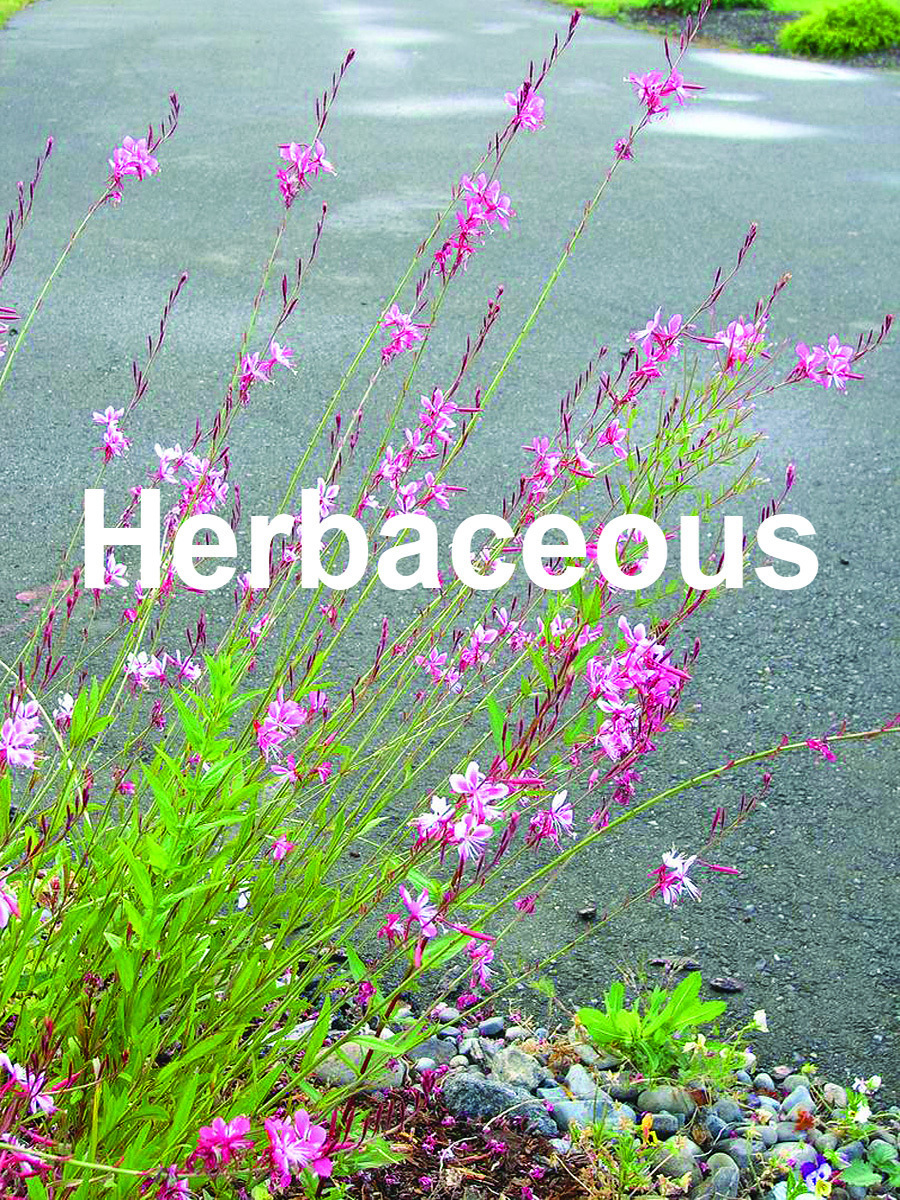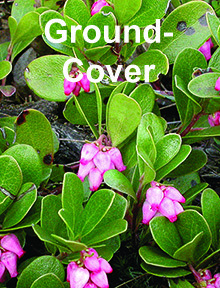Tree and Shrub Alternatives for Western WA
Below, you will find non-invasive alternatives to common invasive or noxious weeds.
Looking to replace a specific plant? Click here to jump to that section!
Common European Hawthorn & European Mountain Ash
Full List of Recommended Tree and Shrub Alternatives
Key
Looking for a different type of plant?
Alternatives to Butterfly Bush
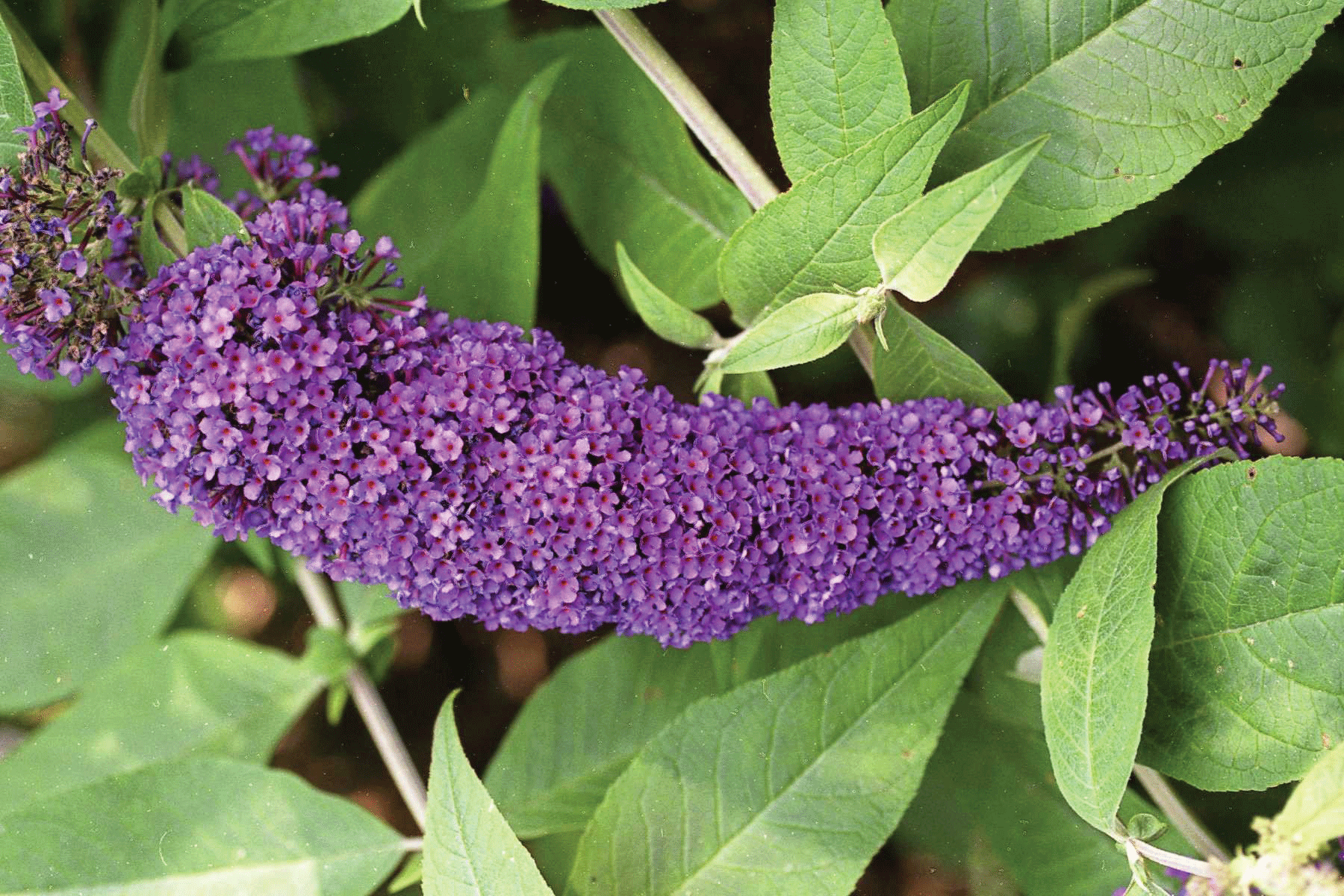
INVASIVE: Butterfly Bush
Buddleja davidii
Class B Washington State Noxious Weed
With its showy purple flowers and ability to thrive under a variety of conditions, butterfly bush has become a popular garden ornamental in North America. However, it has escaped cultivation, invading roadsides, logged clearings, and other disturbed areas where it can form dense thickets. In the Pacific Northwest, it is problematic along rivers and streams, where it traps sediment. It does not seem to be a host plant for many butterfly larvae, but it can displace native willow species upon which many of our native butterfly larvae feed.
More choices: Non-invasive butterfly bushes Buddleja fallowiana, B. globosa, and interspecific Buddleja hybrids such as B. x weyeriana. Also: Caryopteris x clandonensis, Rose-of-Sharon (Hibiscus syriacus), and natives Lewis’ mock orange (Philadelphus lewisii) and red-flowering currant (Ribes sanguineum).
Learn more here:
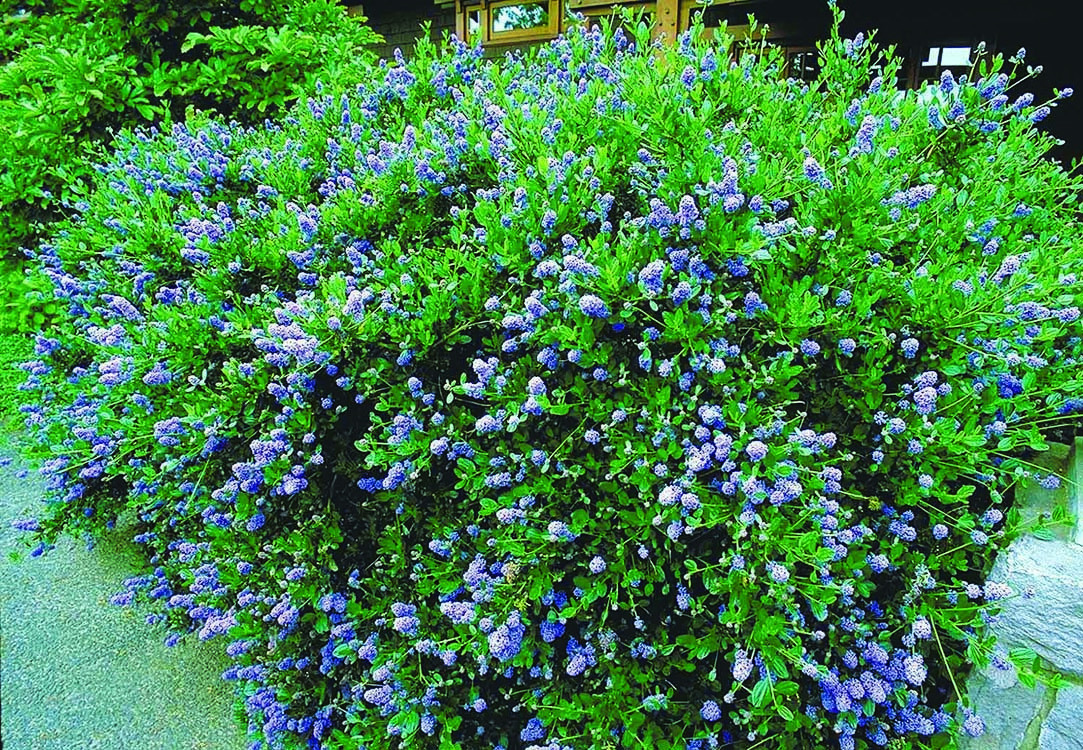
Recommended Alternative: California Lilac
Ceanothus ‘Victoria’, ‘Dark Star’, ‘Julia Phelps’, ‘Blue Mist’, C. x vetchianus
A neat and tidy, profusely blooming and sun-loving evergreen shrub.
• A wonderful fast-growing and drought-tolerant shrub for well-drained soils, this nitrogen-fixing plant tolerates poor soils.
• It attracts butterflies and honey bees.
• The beautiful flowers are blue and fragrant, with long spring bloom-time.
• This is a very self-reliant plant that is easy to care for, with no pest or disease problems.
• California lilac is evergreen and looks neat & green year-round.
• ‘Victoria’ is a Great Plant Pick.
![]()
![]()
![]()
![]()
![]()
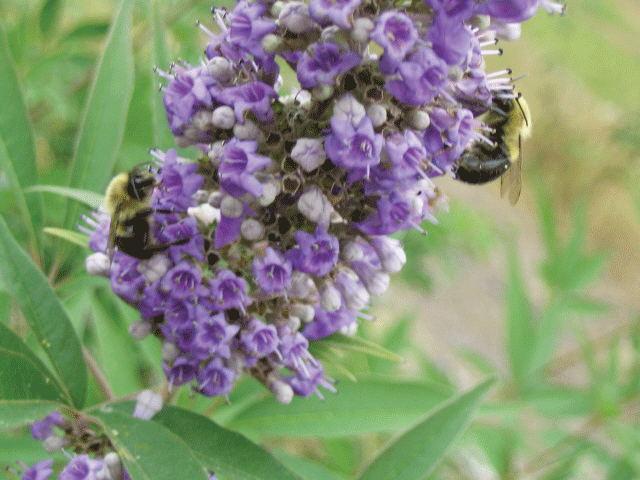
Recommended Alternative: Chaste Tree
Vitex agnus-castus
A tall and upright buddleja-like shrub for a hot sunny site.
• Summer to early autumn blooms add flower color at the same time of year as butterfly bush.
• Blooms are lilac-like in form, fragrant, and lavender-purple or white, blooming late summer into fall in full sun.
• The necter attracts honey bees and butterflies and foliage provides food for butterfly larvae.
• Palmately compound, dark-green foliage is aromatic.
• The chaste tree is free of pests and diseases.
USDA zones 6-10
![]()
![]()
![]()
![]()
Image Courtesy of Alice Coulthard
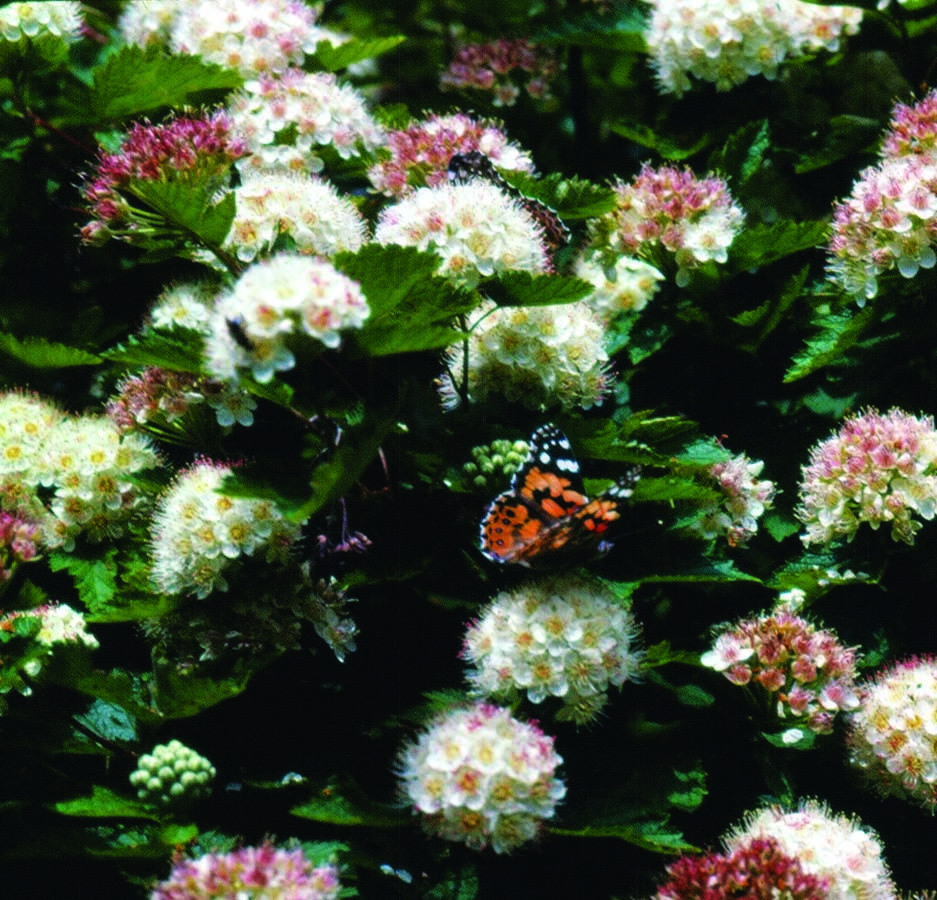
Recommended Alternative: Pacific Ninebark
Physocarpus capitatus & cultivars
A profusely blooming shrub with beautiful, shaggy bark for full sun or shade.
• It attracts butterflies and their larvae.
• Blooms are rounded pompoms of white to white-pink and the bloom time is earlier than butterfly bush –late spring to early summer.
• A deciduous shrub with an upright habit reaching a similar height to butterfly bush (12-15 feet). It can be maintained at 8-10 feet and is adapted to a wide range of soils and exposure to sun.
USDA 3-10
![]()
![]()
![]()
![]()
![]()
![]()
Image Courtesy of M.R. and R.W. Smith
Alternatives to Spurge Laurel
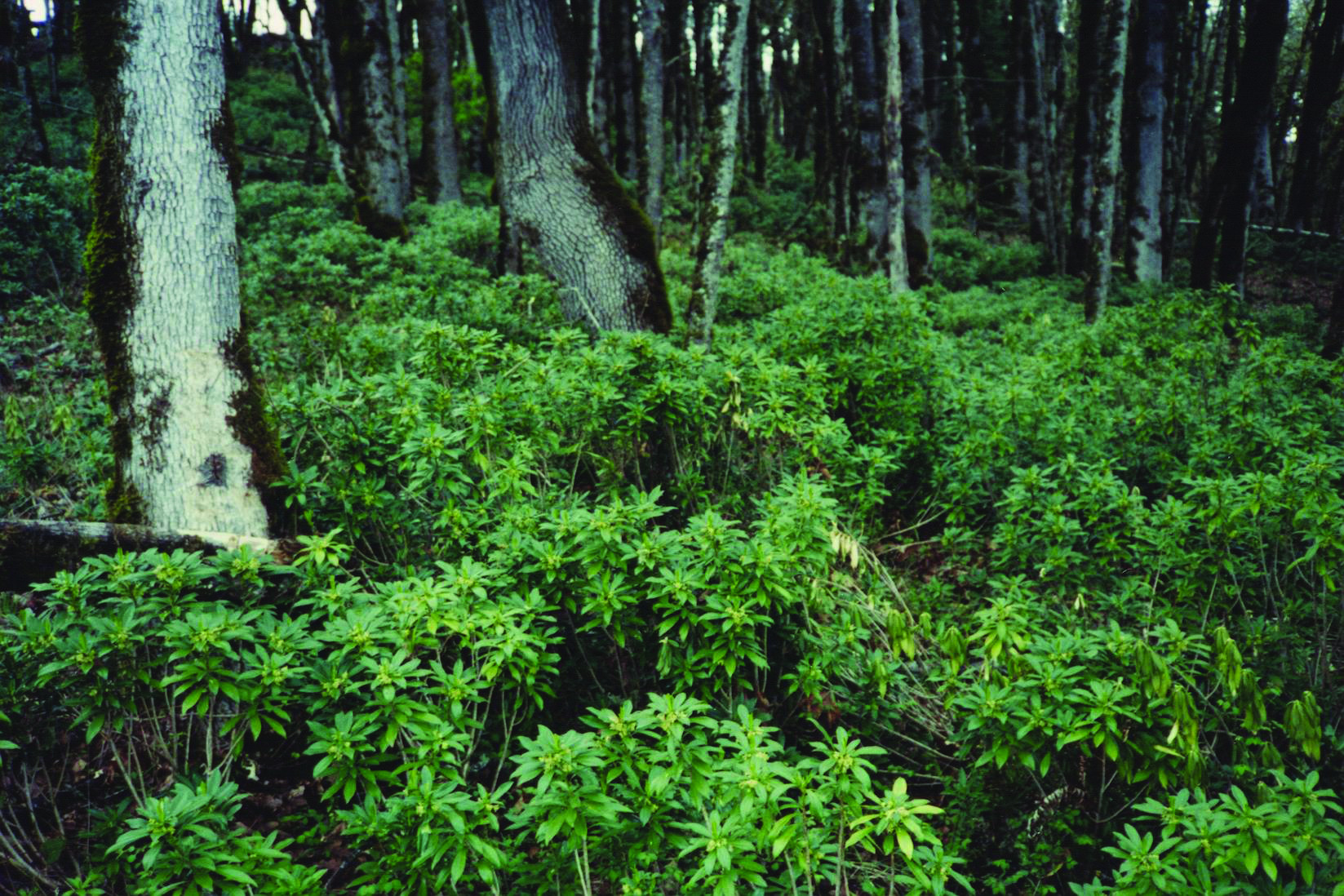
INVASIVE: Spurge Laurel
Daphne laureola
Class B Washington State Noxious Weed
Spurge laurel is a shade-tolerant ornamental shrub with shiny, dark evergreen leaves and light green flowers. Birds spread its bluish-black berries into the forest understory, where the shrub competes with native plants for water and nutrients. A native to Europe and North Africa, spurge laurel is considered one of the top ten plants threatening rare Garry oak ecosystems in British Columbia, and is spreading throughout Washington and Oregon. Its sap and berries are also toxic.
More choices: Mexican mock orange (Choisya ‘Aztec Pearl’), fragrant sweetbox (Sarcococca ruscifolia), Skimmia cultivars, variegated hybrid daphne (Daphne × burkwoodii ‘Carol Mackie’), hybrid daphne (Daphne x transatlantica ‘Eternal Fragrance’) and our native evergreen huckleberry (Vaccinium ovatum).
Learn more here:
Image Courtesy of Yamhill County Soil & Water Conservation District
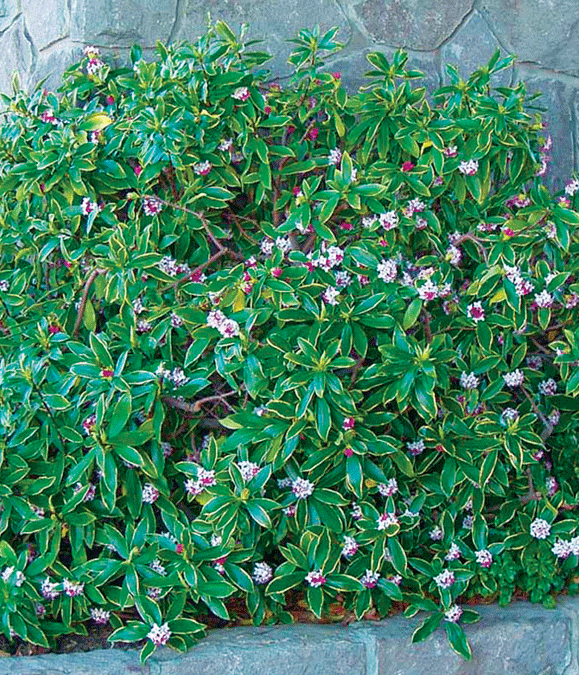
Recommended Alternative: Winter Daphne
Daphne odora ‘Aureomarginata’
This is a winter blooming, deliciously fragrant shrub.
• The attractive ornamental has larger, fragrant, pinkish flowers than spurge laurel.
• This shrub prefers shady areas.
• Like spurge laurel, winter daphne is an early bloomer, from February to March, and is also an evergreen.
• The cultivar ‘Aureomarginata’ has a contrasting creamy gold leaf margin. The species has entirely green leaves and is also recommended.
USDA zones 7-9
![]()
![]()
![]()
Image Courtesy of Monrovia Nursery
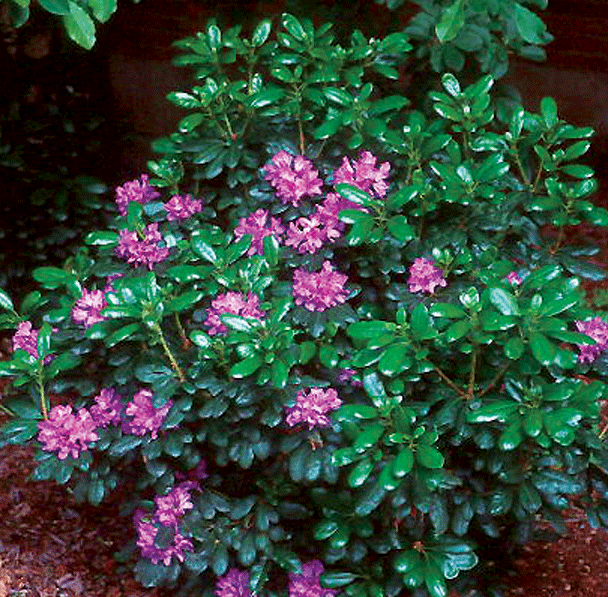
Recommended Alternative: Daphnoides Rhododendron
Daphne odora ‘Aureomarginata’
Beautiful, large purple flowers decorate this evergreen shrub.
• Large purple flowers are eye-catching, unlike spurge laurel’s insignificant greenish-white flowers.
• This rhododendron does not have Daphne species’ fragrant flowers.
• It prefers sun to partial shade.
• Daphnoides blooms after spurge laurel, in late spring.
• As its name suggests, the leaves are very “daphne-like”.
USDA zones 4-8
![]()
![]()
![]()
Image Courtesy of Pat Breen, Oregon State University
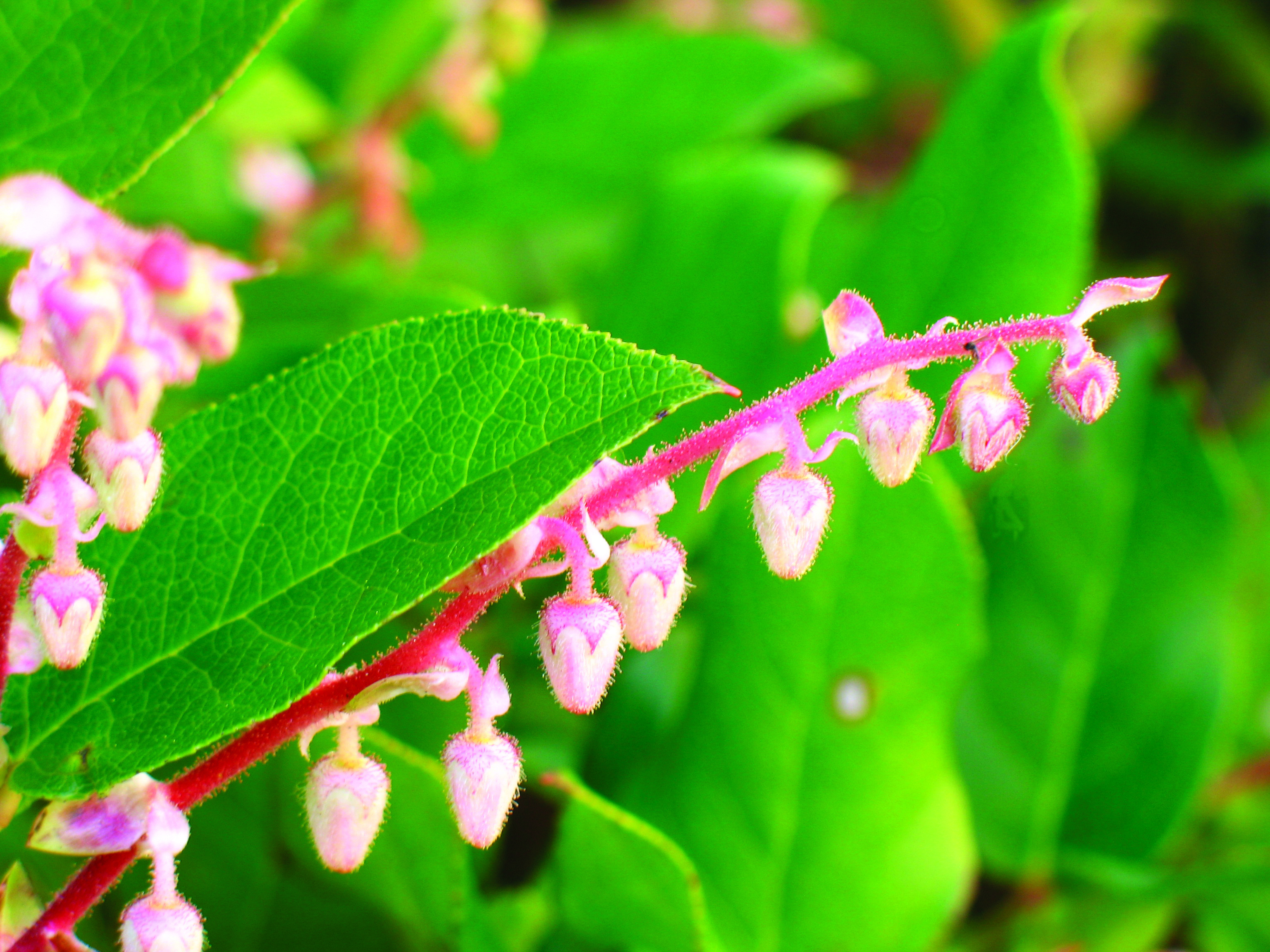
Recommended Alternative: Salal
Gaultheria shallon
A highly adaptable, native, evergreen shrub with round leathery leaves.
• Small bell-shaped white flowers bloom March-June, with purplish berries appearing in late summer.
• Salal inhabits a wide variety of soil types and light levels.
• It attracts wildlife, including honey bees, and butterflies and their larvae.
• The foliage is often used in flower arrangements.
• This rounded, dense shrub grows 3-6 feet tall and up to 10 feet tall on favorable sites.
USDA zones 6-9
![]()
![]()
![]()
![]()
Alternatives to English Holly
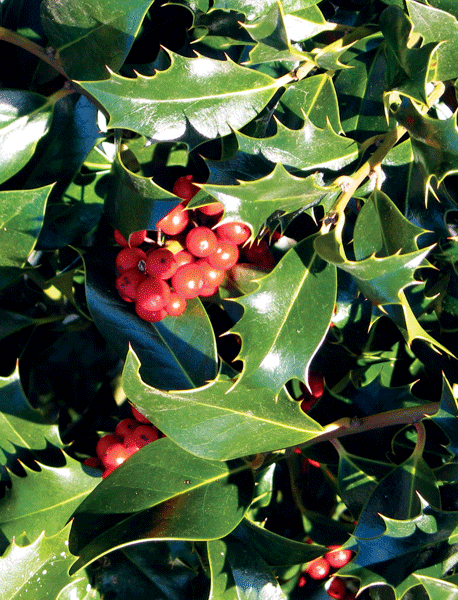
INVASIVE: English Holly
Ilex aquifolium
Washington State Monitor Species
English holly’s evergreen foliage and red berries make it a traditional hedgerow shrub in the Pacific Northwest. Two distinct leaf characteristics are evident, solid green and variegated. The solid green variety has been found escaping outside of gardens. Birds use the berries as a food source, and they spread seeds into surrounding areas where plants may propagate. Because the Northwest’s climate is similar to the species’ native Europe, English holly is appearing as scattered shrubs or low growing trees in lowland forests of western Washington.
More choices: English holly cultivars Ilex aquifolium ‘Ferox Argenta’ and ‘Gold Coast’, Berberis x gladwynensis ‘William Penn’, Eucryphia glutinosa, and disease-resistant cultivars of firethorn such as Pyracantha ‘Mohave’, and P. koidzumii ‘Victory’.
Learn more here:
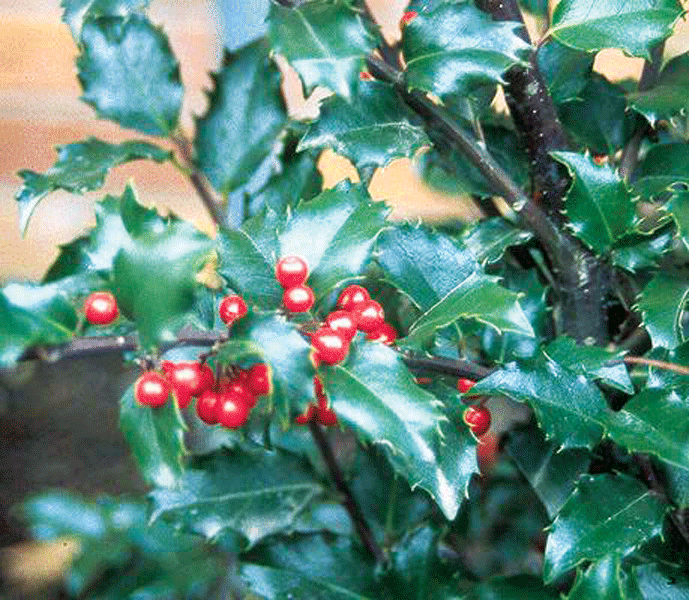
Recommended Alternative: Meserve Hybrid Hollies
Ilex x meserveae ‘Blue Boy’, ‘Blue Girl’, ‘ Blue Prince’, ‘Blue Princess’, ‘China Boy’, ‘China Girl’, ‘Berry Magic’, & ‘Ebony Magie’
If you want lots of berries and beautiful holly foliage, these hybrids are the plants for you.
• Like English holly, the female cultivars will set fruit heavily only when pollinated.
• All are evergreen with a dense habit and take heavy pruning, making good hedges and screening plants.
• All cultivars reach 15-18 feet or less; easier to maintain as a hedge than English holly.
USDA zones 6-8
![]()
![]()
![]()
![]()
Image Courtesy of Pat Breen, Oregon State University
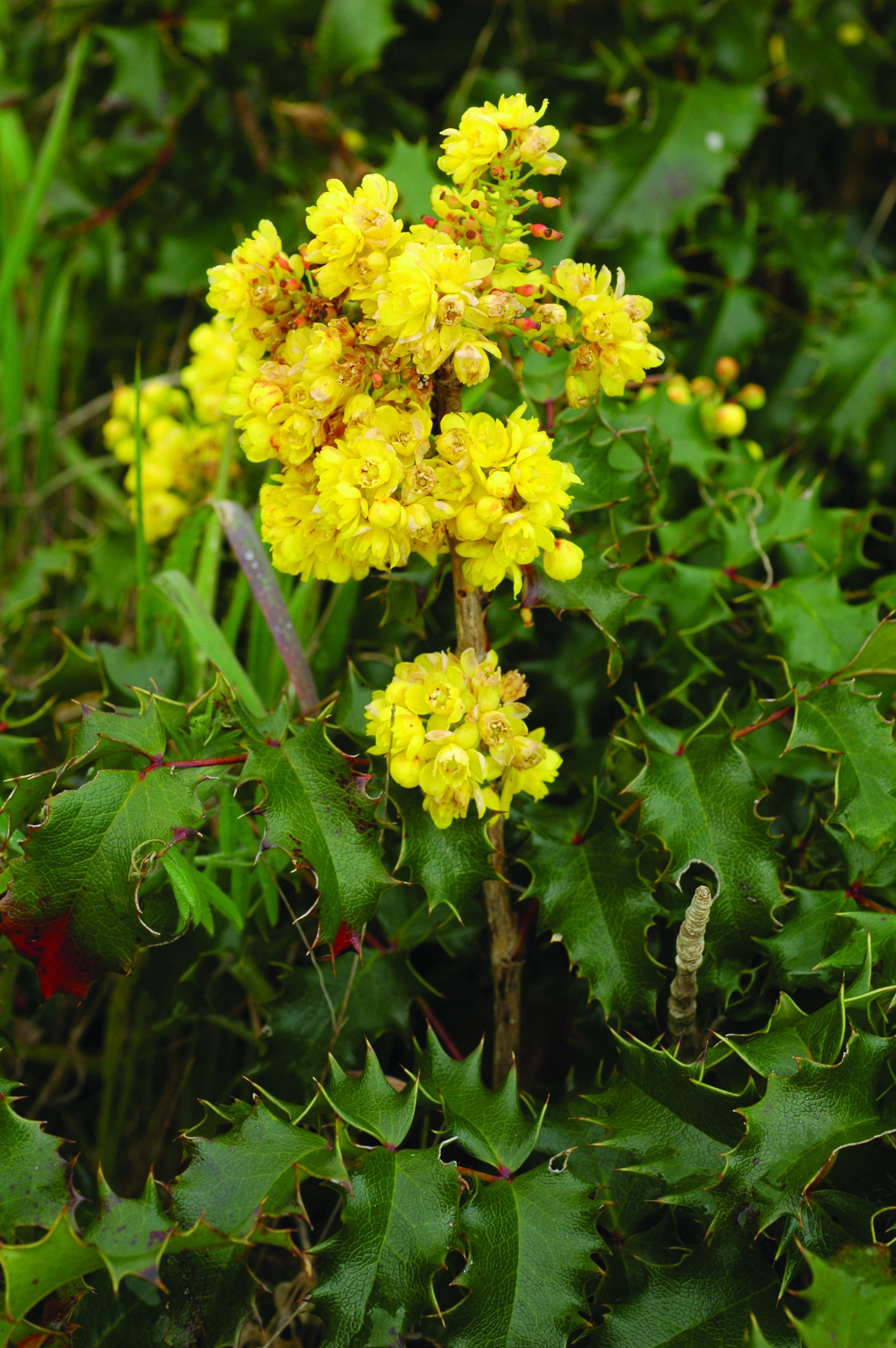
Recommended Alternative: Tall Oregon Grape
Berberis aquifolium (synonym Mahonia aquifolium)
Plant with a dense, upright, almost pillar-like habit and dark green holly-like leaves.
• A great native plant, for screening and hedging in a sunny site, densely cloaked with leaves.
• Smaller than English holly, tall Oregon grape will grow to reach 8-10 feet in time.
• Unlike holly, this plant’s bright yellow blooms are ornamental, appearing in very early spring and are followed by blue-black, not red, berries in summer.
• Easy to grow in a variety of soils.
USDA zones 4-8
![]()
![]()
![]()
![]()
![]()
![]()
Image Courtesy of Ben Legler
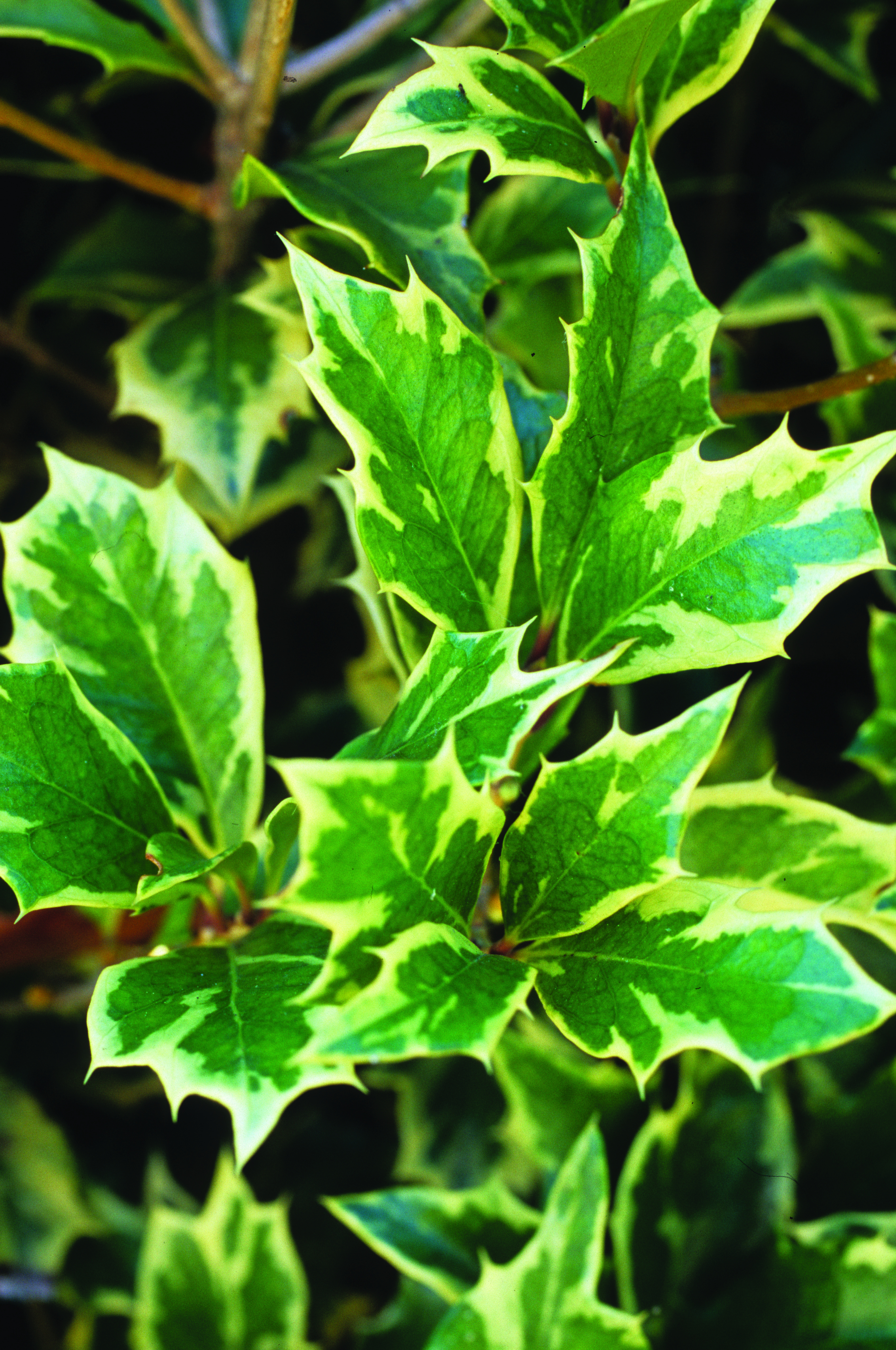
Recommended Alternative: Osmanthus or False Holly
Osmanthus heterophyllus
Great for screening, this shrub looks like an English holly without berries.
• This plant is often mistaken for a holly and, like holly, is well suited for screening and hedges because of its densely branched upright habit.
• The absence of red berries is compensated by small but very fragrant flowers in autumn.
• It grows 15 feet or more in a variety of soil types and in sun or partial shade.
• Easy to care for, it is free of any disfiguring diseases or pests.
• Cultivars ‘Goshiki’, ‘Purpureus’, and ‘Variegatus’ are Great Plant Picks.
USDA zones 6-9
![]()
![]()
![]()
Image Courtesy of Richie Steffen, Great Plants Picks
Alternatives to Black Locust
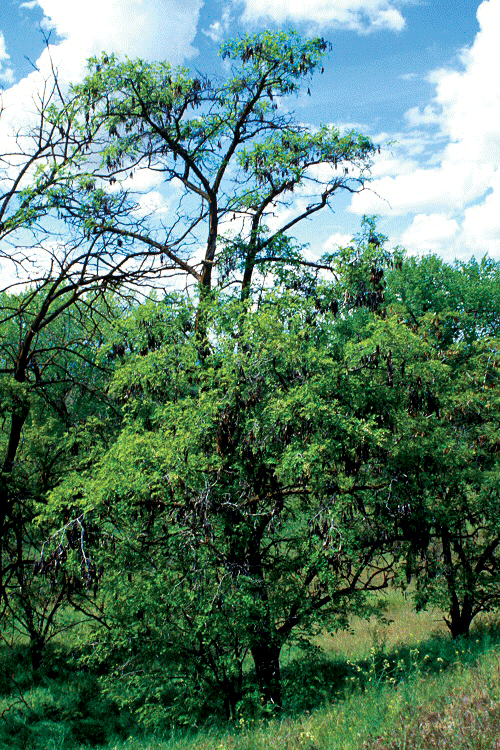
INVASIVE: Black Locust
Robinia pseudoacacia
Native to the southern U.S., black locust has been planted extensively for its attractive and fragrant flowers, hard wood, and rapid growth. This tall, fast-growing, and thorny member of the legume family can quickly form dense stands in prairies and along forest edges, displacing native vegetation and reducing the herbaceous understory. It is good at out-competing many other plants because of its nitrogen-fixing ability. Already problematic in the northeastern U.S. and in Texas, black locust is also invasive in the Pacific Northwest and California.
More choices: Katsura (Cercidiphyllum japonica), American tulip tree (Liriodendron tulipifera), and Japanese scholar tree (Sophora japonica).
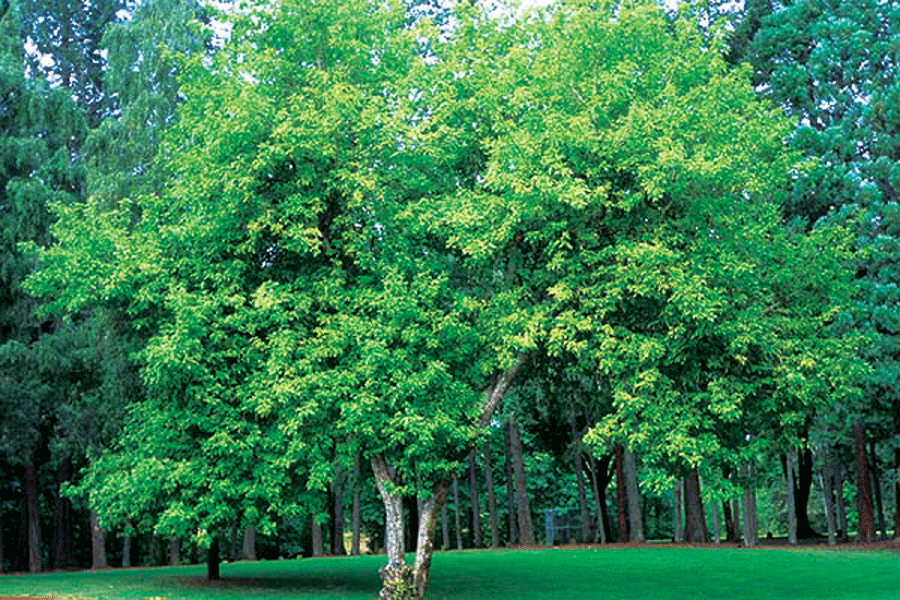
Recommended Alternative: Oregon Ash
Fraxinus latifolia
Native to the pacific northwest, this tree grows well in moist soils.
• Light green, compound leaves provide a texture similar to black locust.
• Oregon ash leaflets are larger than those of black locust.
• Similar in height to locust, Oregon ash can grow up to 80 feet.
• The round, full crown shape of mature trees is similar to that of black locust.
USDA zones 6-8
![]()
![]()
![]()
![]()
Image Courtesy of Pat Breen, Oregon State University
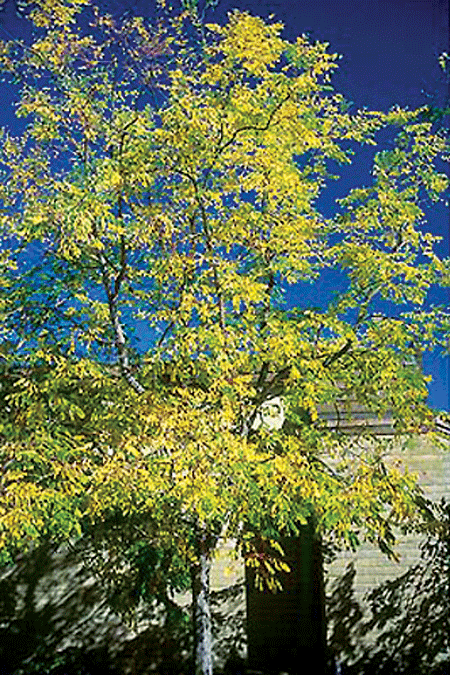
Recommended Alternative: Kentucky Coffee Tree
Gymnocladus dioicus
A drought- and air-pollution-tolerant tree for moist, well-drained sites.
• Small leaflets on compound leaves provide a light and airy texture.
• Seed pods, similar to those of black locust, can be avoided by planting male trees.
• With heights of up to 75 feet, Kentucky coffee tree provides a similar shade canopy effect.
• Though moderately fast growing, Kentucky coffee tree does not seed aggressively like black locust.
USDA zones 5-9
![]()
![]()
![]()
![]()
Image Courtesy of Pat Breen, Oregon State University
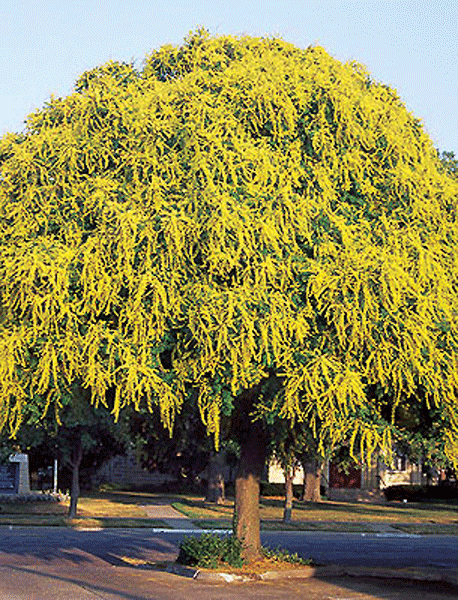
Recommended Alternative: Golden Rain Tree
Koelreuteria paniculata
This medium-sized ornamental tree tolerates a wide range of soil conditions in sunny to partly shady sites.
• Showy yellow flowers grace what is one of the few mid-summer blooming trees.
• Compound foliage offers a similar texture to black locust.
• The ornamental fruit pods last through winter.
• Like black locust, golden rain tree grows quickly.
• This tree is disease- and pest-resistant.
USDA zones 6-9
![]()
![]()
![]()
![]()
Image Courtesy of Pat Breen, Oregon State University
Alternatives to Common European Hawthorn & European Mountain Ash
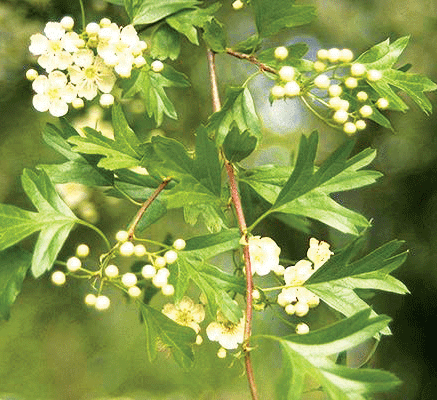
INVASIVE: Common European Hawthorn & European Mountain Ash
Crataegus monogyna & Sorbus aucuparia
These small, ornamental trees are popular for landscaping because of their attractive white flowers and showy red fruit. But birds readily disperse the seeds from garden plantings into natural areas, where hawthorn displaces native vegetation and forms impenetrable thickets that can change the understory ecosystem of forests. European mountain ash can establish in both wetland and upland areas. Beautiful, native versions of both of these trees exist, and more demand of them will create supply in nurseries.
More choices: Other mountain ash species (Sorbus commixta and S. huphensis), Washington hawthorn (Crataegus phaenopyrum), crab apple (Malus ‘Evereste’), Japanese scholar tree (Sophora japonica), and natives western serviceberry (Amelanchier alnifolia), Columbia hawthorn (Crataegus columbiana), and Sitka mountain ash (S. sitchensis).
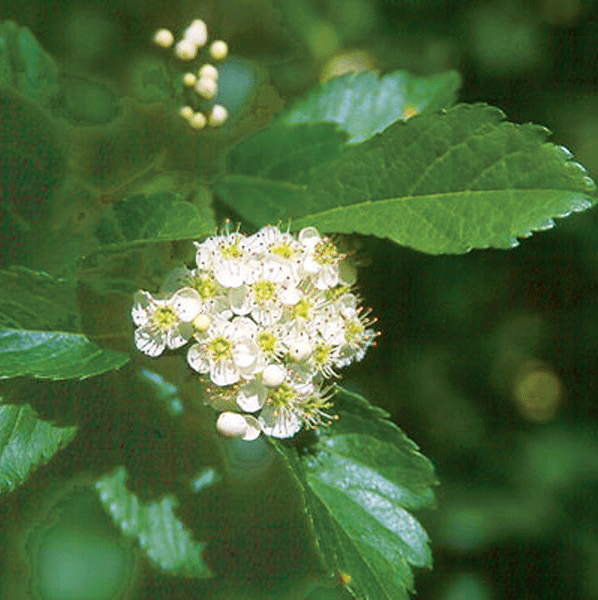
Recommended Alternative: Douglas Hawthorn
Crataegus douglasii
Native to western North America, this small tree can easily be confused with the invasive Crataegus monogyna.
• Similar in appearance to the single-seeded invasive hawthorn, Douglas hawthorn can be distinguished by the three to five nutlets found in the fruit and less-lobed leaves.
• Showy white flowers open in late spring.
• This native provides erosion control in moist soil conditions and riparian areas.
USDA zones 2-8
![]()
![]()
![]()
![]()
![]()
![]()
Image Courtesy of Pat Breen, Oregon State University
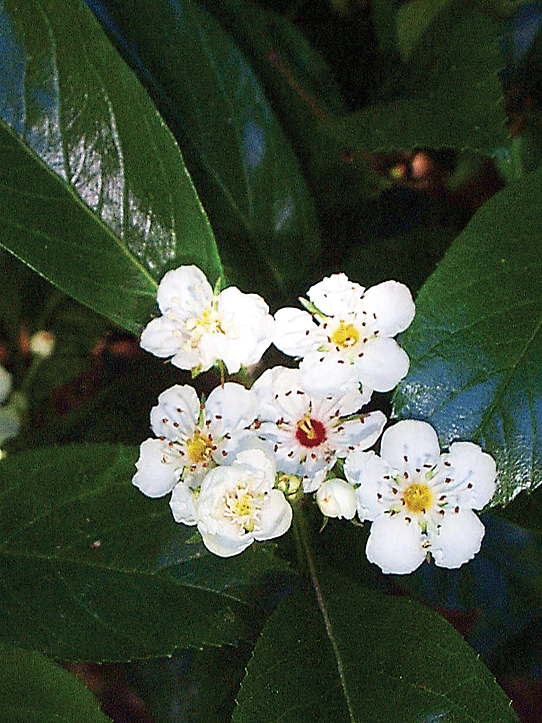
Recommended Alternative: Lavelle Hawthorn
Crataegus x lavalleei
A superb ornamental tree in all seasons for sunny to partly sunny, well-drained sites–one of the very best hawthorns for the garden.
• Showy white flower clusters appearing between May and June are more ornamental than the invasive hawthorn and ash.
• Bright orange-red crabapple fruits contrast with autumn leaves and dark bark.
• Glossy, dark green and boldly textured leaves develop a beautiful bronze tinge in the fall.
• This tree is eminently suited to urban and suburban gardens, reaching 25-30 feet tall and 20-25 feet wide.
USDA zones 3-10
![]()
![]()
![]()
![]()
![]()
![]()
![]()
Image Courtesy of Alan Dodson, Great Plant Picks
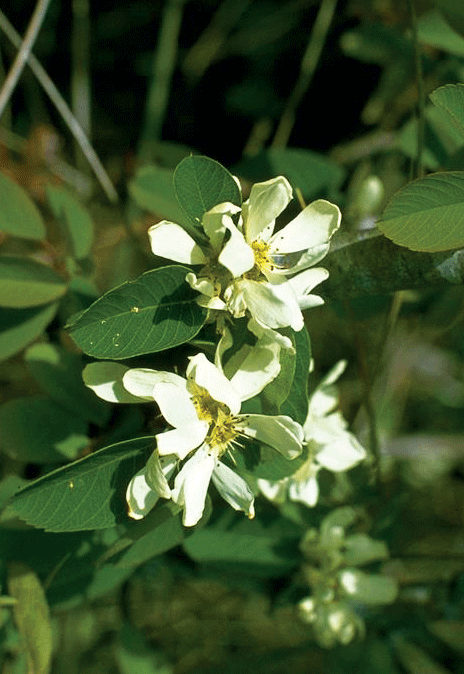
Recommended Alternative: Western Crabapple
Malus fusca
A Pacific coast native for moist soils in a sunny to partly shady site.
• Pretty white to pink flowers appear in mid-April.
• Edible but tart red crabapple fruits are visible in late summer to fall.
• Red or yellow-orange leaf color highlights your garden in fall.
• This native can be used as a small shrub or accent tree, growing to 35 feet in height.
USDA zones 3-7
![]()
![]()
![]()
![]()
![]()
![]()
![]()
Image Courtesy of Br. Alfred Brousseau, St. Mary’s College
Full List of Recommended Tree and Shrub Alternatives
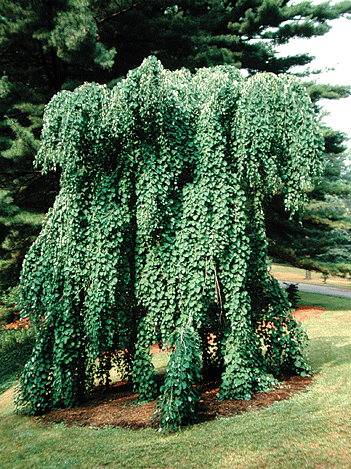
The following is a list of recommended trees and shrubs for Western Washington. You can find more suggestions of non-invasive plants from your local nursery, WSU Master Gardeners, and at www.GreatPlantPicks.org.
- California Lilac, Ceanothus ‘Victoria’, ‘Dark Star’, ‘Julia Phelps’, ‘Blue Mist’, C. x vetchianus
- Chaste Tree, Vitex agnus-castus
- Pacific Ninebark, Physocarpus capitatus & cultivars
- Non-Invasive Butterfly Bushes, Buddleja fallowiana, B. globosa
- Interspecific Buddleja hybrids, such as B. x weyeriana
- Caryopteris x clandonensis
- Rose-of-Sharon, Hibiscus syriacus
- Lewis’ Mock Orange, Philadelphus lewisii
- Red-Flowering Currant, Ribes sanguineum
- Winter Daphne, Daphne odora ‘Aureomarginata’
- Daphnoides Rhododendron, Rhododendron ‘Daphnoides’
- Salal, Gaultheria shallon
- Mexican Mock Orange, Choisya ‘Aztec Pearl’
- Fragrant Sweetbox, Sarcococca ruscifolia
- Skimmia cultivars
- Variegated Hybrid Daphne, Daphne × burkwoodii ‘Carol Mackie’
- Hybrid Daphne, Daphne x transatlantica ‘Eternal Fragrance
- Evergreen Huckleberry, Vaccinium ovatum
- Meserve Hybrid Hollies, Ilex x meserveae ‘Blue Boy’, ‘Blue Girl’, ‘ Blue Prince’, ‘Blue Princess’, ‘China Boy’, ‘China Girl’, ‘Berry Magic’, & ‘Ebony Magie’
- Tall Oregon Grape, Berberis aquifolium (synonym Mahonia aquifolium)
- Osmanthus or False Holly, Osmanthus heterophyllus
- English Holly Cultivars Ilex aquifolium ‘Ferox Argenta’ and ‘Gold Coast’
- Berberis x gladwynensis ‘William Penn’
- Eucryphia glutinosa
- Disease-Resistant Cultivars of Firethorn such as Pyracantha ‘Mohave’, and P. koidzumii ‘Victory
- Oregon Ash, Fraxinus latifolia
- Kentucky Coffee Tree, Gymnocladus dioicus
- Golden Rain Tree, Koelreuteria paniculata
- Katsura, Cercidiphyllum japonica
- American Tulip Tree, Liriodendron tulipifera
- Japanese Scholar Tree, Sophora japonica
- Douglas Hawthorn, Crataegus douglasii
- Lavelle Hawthorn, Crataegus x lavalleei
- Western Crabapple, Malus fusca
- Other Mountain Ash Species, Sorbus commixta and S. huphensis
- Washington Hawthorn, Crataegus phaenopyrum
- Crab Apple, Malus ‘Evereste’
- Western Serviceberry, Amelanchier alnifolia
- Columbia Hawthorn, Crataegus columbiana
- Sitka Mountain Ash, S. sitchensis



